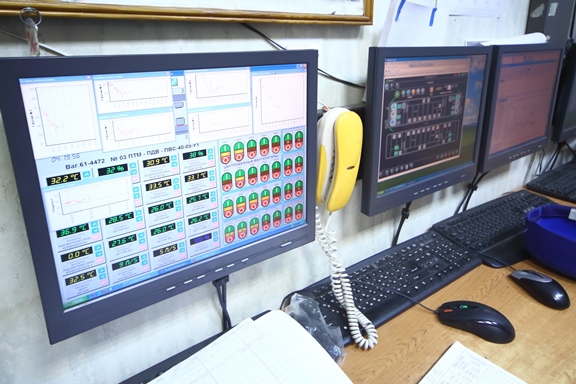The case for dedicated smart building networks
Breaking up doesn’t have to be hard to do.

Pook-Ping Yao,
CEO,
Optigo Networks
|
March 2015 |
[an error occurred while processing this directive] |
|
The case for dedicated smart building networks Breaking up doesn’t have to be hard to do. |
 Pook-Ping Yao, CEO, Optigo Networks |
Why divorcing your building and IT networks will make for a
more secure long-term relationship with your smart building.
| Articles |
| Interviews |
| Releases |
| New Products |
| Reviews |
| [an error occurred while processing this directive] |
| Editorial |
| Events |
| Sponsors |
| Site Search |
| Newsletters |
| [an error occurred while processing this directive] |
| Archives |
| Past Issues |
| Home |
| Editors |
| eDucation |
| [an error occurred while processing this directive] |
| Training |
| Links |
| Software |
| Subscribe |
| [an error occurred while processing this directive] |
You’ve
taken the
plunge and are now operating or developing a smart
building. All those efficiency savings and the improved tenant
satisfaction from automated systems is pretty amazing. But have you
given much thought about how integrating your building network onto
your existing IT network can lead to security issues down the road? Is
connecting your new smart thermostat opening up your IT network to
potential threats and intruders?
Challenges of integrated systems
For years, IT networks have combined our wired and Wi-Fi Internet
connections with our phones, data centers, and servers. When smart
building technologies came along and needed networking, it seemed
like a no-brainer to ride these new building systems onto the
already available IT network. As a consequence, our HVAC, lighting,
security cameras, elevators, access controls, and other smart devices
have increasingly become part of the IT network; sometimes, with
communications and access provided to facility managers for them to
monitor those devices that typically remain their responsibility.
Convergence, it seems, is prevalent.

However, this model is increasingly coming under attack. While the
vulnerabilities of IT systems have long been seen as a security
concern, the same cannot be said of building systems. It is only in the
recent move to IP-addressable smart building technology and the
convergence of building systems onto the IT infrastructure that IT
networks have once again become vulnerable - this time through building
technologies. And hackers are taking notice, even if it has not yet
reached general concern amongst smart building integrators.
The 2013 attacks on Target is a case in point. If you remember, the
breach started with hackers gaining access to Target’s network through
an HVAC system. Once onto Target’s building network, the hackers
were
able to gain access to Target’s point-of-sale (PoS) terminals, which
were accessible from the same network (most likely through
convergence). An even larger attack took place on Home Depot’s
networks
in 2014.
Because of the daily news of hacks and breaches, there is growing
concern in the more general Internet of Things (IoT) sector with
respect to privacy and security. The industry has learned (and
governments are catching on) that widespread adoption of IoT is
hampered by consumer and business apprehension over privacy and
security. According to IDG Enterprise Research, the biggest increase in
IT spending is in security technologies with 46 percent of companies
reporting that their budgets for this will increase in 2015. It’s a
huge market looking for answers and new technologies.
With the threat of hackers attacking the building network increasing
(especially PoS terminals) and enterprise and consumers increasingly
concerned, Homeland security is starting to get involved. This is
particularly prudent, as the the Secret Service estimates more than
1,000 US businesses were affected by the same attack as Target and Home
Depot. However, what is a smart building operator/developer to do?
What is the answer?
Solutions do exist for those with the proper equipment and expertise. A
single switch can be configured to properly manage inbound and outbound
communications. Sophisticated Access Control Lists (ACL) can be created
on the Ethernet layer level to limit traffic between devices and the
servers/data centers they are meant to connect to. And expensive
monitoring software can be purchased to actively search out anomalies
in network traffic. All of these require a highly trained IT team with
specific knowledge, and a particular interest, in network security.

But these solutions are generally only
good for single switches that
are easy to logically configure and monitor. What happens when the
building has hundreds or thousands of devices across a wide area,
riding on top of a sophisticated IT infrastructure configured to share
sensitive financial and confidential information? Furthermore, as new
devices are added or when changes in the network are required, a
rebalancing of these rules and configurations may make maintenance of
the network complicated - especially after turnover in your IT team.
How is such a complex system to be managed?
The case for segregated networks
Segregating your building systems from your IT network is the simplest
and most effective way to minimize any impact of someone
infiltrating the building systems and stealing sensitive information.
It is the best and only way to ensure the building network port
connected to your HVAC controller cannot talk to sensitive servers or
gain access to sensitive credit card information riding on your IT
infrastructure.
Physical separation ensures this. And if communications between the IT
and building systems are required, the use of properly configured
firewalls or virtual private networks (VPNs) between your IT and your
building network is easily managed to only allow the proper traffic
between these two networks to get through.
[an error occurred while processing this directive]
The Department of Homeland Security agrees. In response to the Target
attacks, a recent alert
from the US Computer Emergency Readiness Team
(US-CERT) recommends segregated networks as an important layer of
security separating devices (i.e. PoS devices) from the broader IT
infrastructure. We agree with this recommendation and believe that the
entire building system should be logically and physically separated
from IT.
Building systems and IT often have different owners, and require
different layers of security. While firewalls and complex security
software are commonplace on servers and computers, they do not yet
exist for the user-less devices that make a smart building work.
While no amount of security will guarantee protection, there are simple
steps that a smart building developer should take. It starts with
segregated or dedicated building networks. This layer of security is a
cost effective approach to securing a smart building that will become
even more crucial in the years ahead, as increasing amounts of smart
technology is added to a smart building’s infrastructure. Target’s hack
through the HVAC system has cost the company $200 Million and counting.
Separating networks is not that hard to do, and it will result in not
just a smart building, but a secure smart building. It’s worth it.
About
the Author:
Pook-Ping Yao is CEO of Optigo
Networks, a company making smart
buildings smarter. Ping is a recognized expert in networking with years
of network security experience. He has over 12 years at PMC-Sierra in
networking design and applications.
[an error occurred while processing this directive]
[Click Banner To Learn More]
[Home Page] [The Automator] [About] [Subscribe ] [Contact Us]